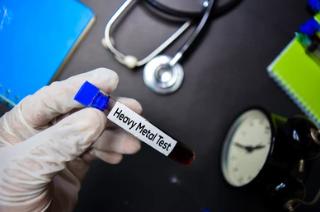Determining metals in different types of food samples is essential for a number of reasons, the most important of which are the nutritional and toxic effects of these elements or their compounds. It is also essential to know the content of metals in alcoholic beverages such as wine. In many countries, alcoholic beverages, including wine, account for over 12% of the general beverage consumption. As such, they can be a significant source of many metal ions. Monitoring the metal content of wine is important because of its toxic effects on humans in case of excessive intake, as well as for authenticity purposes and quality control, such as when these elements affect the winemaking process or alter its taste and quality.

Wine contains large amounts of elements (Na, K, Mg, Ca), trace elements (Fe, Cu, Zn, Mn, Pb), and ultra-trace elements (Cr, As, Cd, Ni). The levels of certain contaminant elements, such as Cu, Zn, As, Cd, and Pb, are of great concern at different stages of the brewing process. Specific rules limiting the content of metals in wine exist in many countries/regions, and manufacturers must meet these rules to obtain export rights to these markets. As one of the world's leading providers of wine hygiene testing services, Lifeasible offers professional solutions for heavy metals testing in wine and micro-alcoholic beverages, including Cr, As, Cd, Ni, Hg, Pb, etc. Our laboratory will perform tests strictly following international standards and provide reliable analytical results.
We offer proven standard methods and other methods to test heavy metals in wine for our customers. Our solutions meet the need for fast, simple, and accurate determination of heavy metals in large quantities of wine. The techniques we can offer are as follows:
Our ICP-MS and ICP-OES can analyze multiple elements in wine with high selectivity, high sensitivity, and low detection limits. In addition, we can evaluate the range of applicability and parameters such as linearity, minimum detection limit, limit of quantification, repeatability, accuracy, uncertainty, etc., for the quantitative determination of toxic metals in wine and alcoholic beverages.
Lifeasible aims to help customers identify and quantify heavy metal ions in different types of wine. In addition, we offer chemometric analysis (cluster analysis, non-stratified analysis, and principal component analysis) to present specific correlations between the chemical variables characterizing wine samples. You can obtain information on the presence, distribution, and concentration of metals in wine and data on the existing relationships between metals and other parameters.
Our solutions for heavy metals testing in wine have excellent reproducibility and accuracy for different types of wines, and the results fully comply with the standards. Some of our methods are easy to use, fast and efficient, with high accuracy, making them a reliable choice. If you are interested in our solutions, please contact us for technical consultation and quotation.
Reference
Lifeasible has established a one-stop service platform for plants. In addition to obtaining customized solutions for plant genetic engineering, customers can also conduct follow-up analysis and research on plants through our analysis platform. The analytical services we provide include but are not limited to the following:
STU-CRISPR System Improves Plant Genome Editing Efficiency
April 19, 2024
Application of Exosomes in Facial Beauty
April 12, 2024